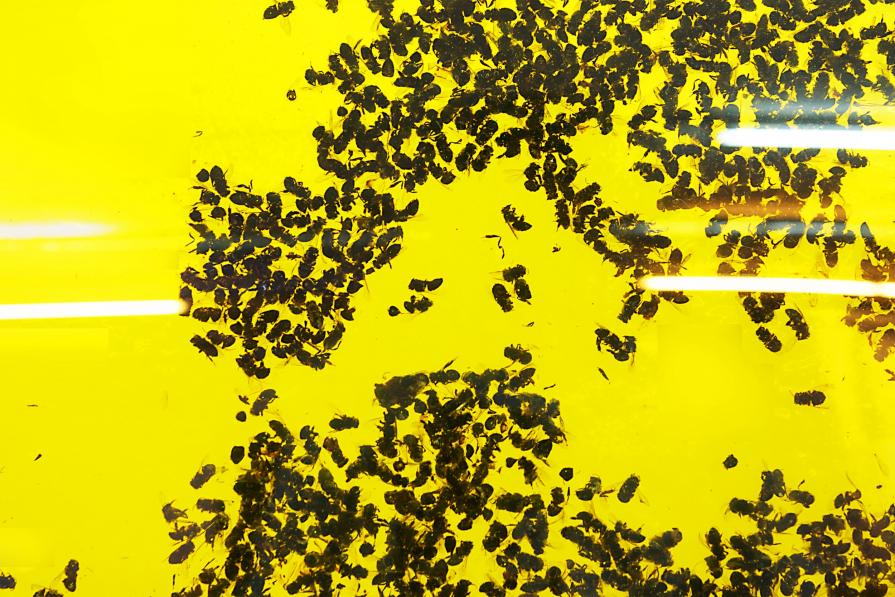A geopolitical truth
"(...) So, his practical and theoretical work is a huge stratification of concepts that deepin the consecuences of the science influence, historical, technological and social in that entelechy called humanity. For example, in some of his amber pieces he uses dead bees because of pesticides and climate change. Far from limit itself to the environmental problem - that characterizes this time - and specifically to the bees catastrophe -, he shares with Aristoteles, Hume or Manderville the metaphor between apicola and human societies, and it pursuit a sensitive reflection by the viewer about concepts like the loss of identity and individuality in favor of an formless mass, the “situational beehave” we live in, or the dissolution of the geopolitical borders. the disolution of self consciousness. Moreover, with these resin “capsules”, deepin both theoretical and practical ways in the conservation of organic matery, (with all of the biology interest that it could bring), a scientistic praxis that in many times (and this is not different) Mircea Eliade could identify as the religious interest of trascendence. That is why Jesu atach with all of these pieces a document with which he authorizes to the International Science Comunity to use them just in case of needing and with researching purposes.
All of it, that he calls the science fiction of the contemporary art, is structured over some aesthetical guidelines that have their origin in his interest in nature ans science, finding in its method a way of formalize his work, using the importance of SMALL things and characterized by the organization in series, repetition and classification" (...)





















Comments 0
Say something